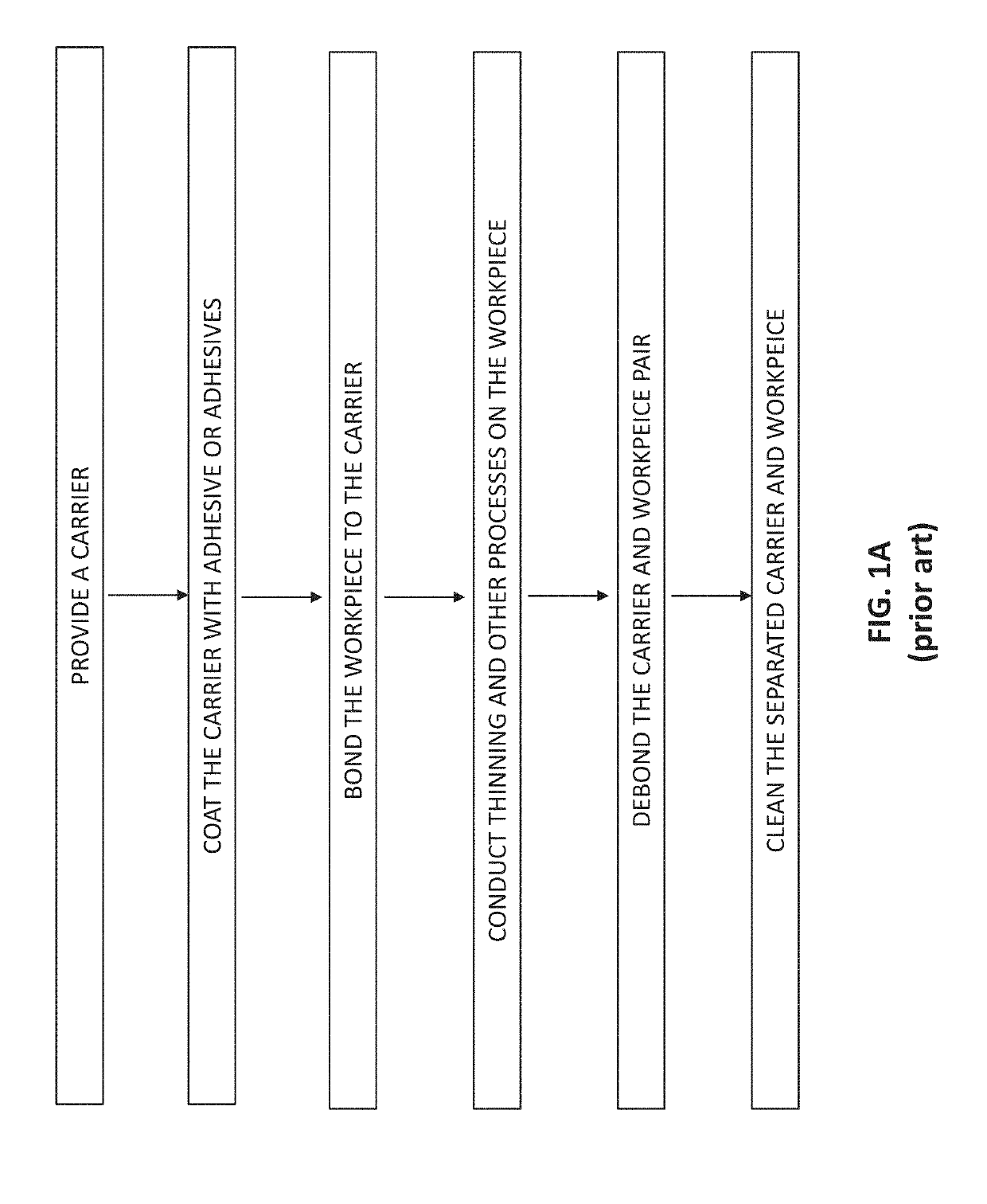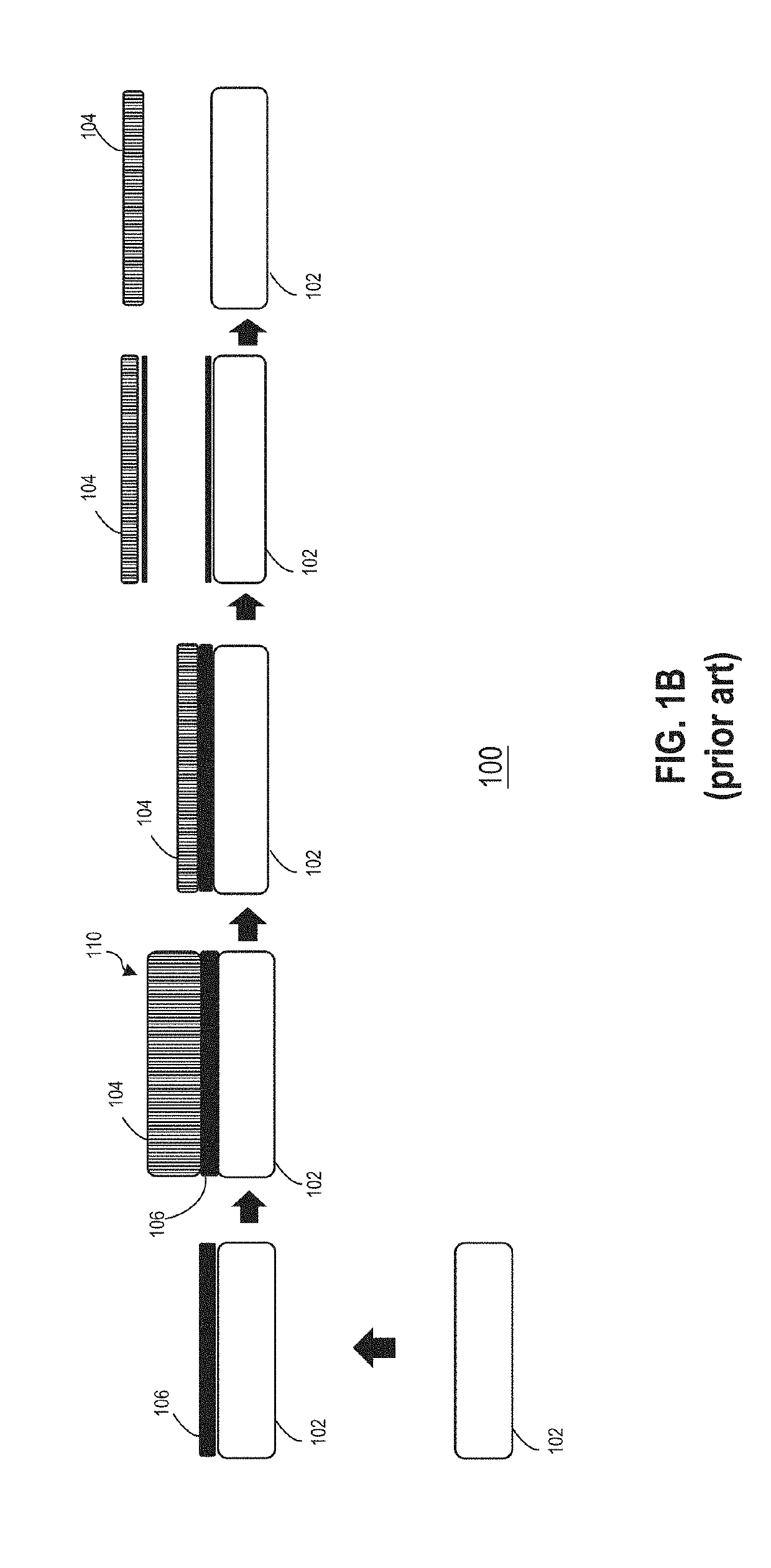Method of debonding work-carrier pair with thin devices
a work-carrier and thin-film technology, applied in semiconductor devices, chemistry apparatus and processes, lamination ancillary operations, etc., can solve the problems of high stress on the adhesive and the device wafer, high risk of localized device wafer damage, and debonding of the device wafer from the carrier, so as to improve process efficiency and simplify the procedure , the effect of high wafer throughpu
- Summary
- Abstract
- Description
- Claims
- Application Information
AI Technical Summary
Benefits of technology
Problems solved by technology
Method used
Image
Examples
Embodiment Construction
[0029]Disclosed are methods of separating a temporary adhesive bonded carrier-workpiece pair with the use of a thin subject in association with laser debonding or mechanical debonding. This method can be used for processing various workpieces of: different shapes, e.g., round, rectangle, and square, among others; different materials, e.g., silicon, gallium arsenide, sapphire, glass, and metal, among others; different thicknesses, e.g., thick or thin; and different applications, e.g., optical lens, semiconductors, displays-LCD, and solar, among others. In some embodiments, the methods may be useful for debonding temporarily adhesive bonded semiconductor wafers that are used in wafer level packaging and 3D semiconductor wafer packaging (2.5D / 3D).
[0030]FIG. 1A is a flow diagram illustrating the steps of prior art temporary wafer bonding, processing, and debonding. As shown, a carrier can be provided, the carrier being coated with an adhesive material, and bonded to a workpiece. Additio...
PUM
| Property | Measurement | Unit |
|---|---|---|
| thickness | aaaaa | aaaaa |
| thickness | aaaaa | aaaaa |
| thickness | aaaaa | aaaaa |
Abstract
Description
Claims
Application Information
 Login to View More
Login to View More - R&D
- Intellectual Property
- Life Sciences
- Materials
- Tech Scout
- Unparalleled Data Quality
- Higher Quality Content
- 60% Fewer Hallucinations
Browse by: Latest US Patents, China's latest patents, Technical Efficacy Thesaurus, Application Domain, Technology Topic, Popular Technical Reports.
© 2025 PatSnap. All rights reserved.Legal|Privacy policy|Modern Slavery Act Transparency Statement|Sitemap|About US| Contact US: help@patsnap.com



